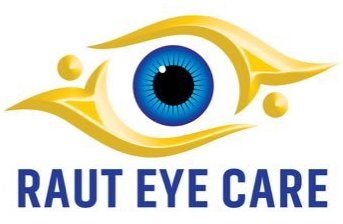Blogs for Eye Tests
List of articles for Eye Tests

Diabetic Retinopathy
It is microvascular changes that occur in one's retina over a period of time during which his/her sugar control is not upto the mark. How do you know if you have diabetic retinopathy(DR), well answer to that question is simple, just have to see a ophthalmologist, a retina specialist to be more specific. What should I expect during my retina consult? In case you are found to have no evidence of DR you will be asked to review at least once a year for routine retina check up. The disease has its staging and the retina specialist is the one who is experienced enough to stage the disease accurately and call for follow-up at intervals according to the stage of your DR as per global guidelines. What if I have blurring of vision in DR? If your vision is blurred due to DR diagnosed by a retina specialist then there could be 3 reasons 1. Due to Diabetic macular edema, which can be treated with a wide range of treatment option like laser, intravitreal injections or simply by instilling drops. Now the duration and frequency of treatment has to be tailored for each individual for which again the retina specialist with his experience plans. However recurrence of this edema do occur vastly because of poor control of diabetes. 2. Due to vitreous hemorrhage, tractional retinal detachments or combined detachments, in this cases retina surgery is what is recommended by retina surgeons. Again the outcome depends on control of diabetes and pre-existing state of your retina. 3. Retina itself has become ischemic with permanent degenerative changes which are irreversible can also lead to vision loss. So as you can understand that the disease is Progressive one either slow or fast depends greatly on your Diabetic control and treatment becomes more and more complicated and expensive with minimal scope of improvement. Hence regular timely follow-ups with your retina specialist is what is recommended.

Cataract Evaluation and Safety Checks
Cataract evaluation is an eye exam designed to diagnose and evaluate the severity of a cataract.During the evaluation, the eye doctor will check your vision and examine the lens of the eye for any signs of opacification or clouding.
The doctor will also measure the eye pressure, look for any signs of inflammation or damage, and assess the retina.Depending on the results of the cataract evaluation, the doctor may recommend surgery or other treatments.
Cataract surgery is a common procedure to remove cataracts and restore vision.After surgery, the doctor may recommend additional tests or medications to help prevent further damage to the eye.
Cataract evaluation is an eye exam designed to diagnose and evaluate the severity of a cataract.During the evaluation, the eye doctor will check your vision and examine the lens of the eye for any signs of opacification or clouding.
The doctor will also measure the eye pressure, look for any signs of inflammation or damage, and assess the retina.Depending on the results of the cataract evaluation, the doctor may recommend surgery or other treatments.
Cataract surgery is a common procedure to remove cataracts and restore vision.After surgery, the doctor may recommend additional tests or medications to help prevent further damage to the eye.

Can I do some eye exercises to reduce my number
Well, there are no scientifically proven evidences to reduce the power of your eye by doing some eye exercises.
The power of eye ,medically termed as refractive error depends upon the anatomical structure of your eye
I.e the length of your eye ,curvature of cornea and lens
So by doing any eye exercises you cannot change the anatomical structure of your eye.

Keratoconus Screening
Keratoconus Screening is an important eye examination to detect an eye condition called keratoconus.
Keratoconus is a disease where the conrnea thins out in certain areas leading to loss of vision and blurred vision. Constantly changing eye glasses number , frequent itching sensation in the eyes, blurred vision, high astigmatism or cylindrical number all can be symptoms of Keratoconus.
Here are the steps involved in keratoconus screening:Visual Acuity Test: This test is used to evaluate your vision and check for any vision abnormalities.
Refraction Test: This test helps to determine your eyeglass prescription.
Corneal Topography: This test takes a detailed map of the shape of the cornea and can detect any abnormalities in its shape that could indicate the beginning stages of keratoconus.
Anterior segment oct:
This is essentially a mri of the cornea
It gives detailed information of each layer of the cornea and helps diagnose early Keratoconus and helps dofferentiate between types of Keratoconus.
Pentacam/visionix:
This uses scheimflug camera technology to photograph the cornea in various slices giving a tomography of the cornea. Along with other tests it helps detect progression of the disease.
Slit Lamp Exam: This exam uses a special device called a slit lamp which magnifies and illuminates the eye to detect any abnormalities in the cornea.
Keratometry: This test measures the curvature of the cornea and can detect any abnormal shapes which could indicate the beginning stages of keratoconus.
Pachymetry: This test measures the thickness of the cornea and can detect any changes that could be indicative of keratoconus.
Ultrasound Biomicroscopy: This test uses sound waves to take a detailed image of the cornea and can detect any irregularities in its shape which could be indicative of keratoconus.
Keratoconus Screening is an important eye examination to detect an eye condition called keratoconus.
Keratoconus is a disease where the conrnea thins out in certain areas leading to loss of vision and blurred vision. Constantly changing eye glasses number , frequent itching sensation in the eyes, blurred vision, high astigmatism or cylindrical number all can be symptoms of Keratoconus.
Here are the steps involved in keratoconus screening:Visual Acuity Test: This test is used to evaluate your vision and check for any vision abnormalities.
Refraction Test: This test helps to determine your eyeglass prescription.
Corneal Topography: This test takes a detailed map of the shape of the cornea and can detect any abnormalities in its shape that could indicate the beginning stages of keratoconus.
Anterior segment oct:
This is essentially a mri of the cornea
It gives detailed information of each layer of the cornea and helps diagnose early Keratoconus and helps dofferentiate between types of Keratoconus.
Pentacam/visionix:
This uses scheimflug camera technology to photograph the cornea in various slices giving a tomography of the cornea. Along with other tests it helps detect progression of the disease.
Slit Lamp Exam: This exam uses a special device called a slit lamp which magnifies and illuminates the eye to detect any abnormalities in the cornea.
Keratometry: This test measures the curvature of the cornea and can detect any abnormal shapes which could indicate the beginning stages of keratoconus.
Pachymetry: This test measures the thickness of the cornea and can detect any changes that could be indicative of keratoconus.
Ultrasound Biomicroscopy: This test uses sound waves to take a detailed image of the cornea and can detect any irregularities in its shape which could be indicative of keratoconus.

Ultrasonography
Ultrasonography is a non-invasive imaging technique that uses sound waves to create a picture of the inside of the body.Ultrasonography is commonly used to diagnose and monitor conditions of the eye, such as glaucoma, macular degeneration, and retinal detachments.
Ultrasound waves are sent into the eye and bounce back off different structures, allowing the doctor to see the shape, size, and position of structures in the eye.It is fast, relatively painless, and does not involve exposure to radiation.
Ultrasonography is a valuable tool for detecting abnormalities in the eye, such as tumors, cysts, and foreign objects.
Ultrasonography is a non-invasive imaging technique that uses sound waves to create a picture of the inside of the body.Ultrasonography is commonly used to diagnose and monitor conditions of the eye, such as glaucoma, macular degeneration, and retinal detachments.
Ultrasound waves are sent into the eye and bounce back off different structures, allowing the doctor to see the shape, size, and position of structures in the eye.It is fast, relatively painless, and does not involve exposure to radiation.
Ultrasonography is a valuable tool for detecting abnormalities in the eye, such as tumors, cysts, and foreign objects.

Ultrasound Biomicroscopy
Ultrasound Biomicroscopy (UBM) is a specialized imaging technique used to evaluate the anterior segment of the eye.UBM uses sound waves to produce a two-dimensional real-time cross-sectional image of the eye structures, including the cornea, iris, lens, and ciliary body.
UBM is a non-invasive procedure with no known side effects.UBM can help diagnose a variety of ocular disorders, such as glaucoma, macular degeneration, and other anterior segment diseases.
UBM can also be used to assess the integrity of the cornea, Lens implant, and corneal transplants.UBM is a very accurate and detailed imaging procedure that can help doctors diagnose and treat eye diseases.
Ultrasound Biomicroscopy (UBM) is a specialized imaging technique used to evaluate the anterior segment of the eye.UBM uses sound waves to produce a two-dimensional real-time cross-sectional image of the eye structures, including the cornea, iris, lens, and ciliary body.
UBM is a non-invasive procedure with no known side effects.UBM can help diagnose a variety of ocular disorders, such as glaucoma, macular degeneration, and other anterior segment diseases.
UBM can also be used to assess the integrity of the cornea, Lens implant, and corneal transplants.UBM is a very accurate and detailed imaging procedure that can help doctors diagnose and treat eye diseases.

B-Scan Ultrasound
B-Scan Ultrasound is a type of medical imaging technique used to visualize the structures inside the eye.It is a non-invasive, painless procedure that uses sound waves to generate images of the eye.
B-scan ultrasound can be used to diagnose and monitor a variety of eye conditions, including glaucoma, retinal detachment, and macular degeneration.It is especially useful because it can detect abnormalities that are not visible on other imaging techniques, such as an ophthalmoscopic exam.
During the procedure, a probe is placed on the surface of the eye and sound waves are sent through the eye.These sound waves create an image of the structures inside the eye that can be viewed on a computer screen.
The image generated by the B-scan ultrasound can help your doctor diagnose and monitor the progression of various eye diseases.
B-Scan Ultrasound is a type of medical imaging technique used to visualize the structures inside the eye.It is a non-invasive, painless procedure that uses sound waves to generate images of the eye.
B-scan ultrasound can be used to diagnose and monitor a variety of eye conditions, including glaucoma, retinal detachment, and macular degeneration.It is especially useful because it can detect abnormalities that are not visible on other imaging techniques, such as an ophthalmoscopic exam.
During the procedure, a probe is placed on the surface of the eye and sound waves are sent through the eye.These sound waves create an image of the structures inside the eye that can be viewed on a computer screen.
The image generated by the B-scan ultrasound can help your doctor diagnose and monitor the progression of various eye diseases.

A-Scan Ultrasound
A-Scan Ultrasound is a type of diagnostic imaging technology used to measure the length and shape of the eye.It works by using sound waves to create a detailed image of the eye's internal structures.
This includes the lens, cornea, and other structures in the eye like the vitreous humor.The information collected by the A-Scan is used to diagnose and treat various eye conditions, such as glaucoma and cataracts.
It is also used to measure the intraocular pressure of the eye, which helps to diagnose and treat many other ocular conditions.The procedure is relatively painless and non-invasive, with no side effects.
It can be used to evaluate the eye before and after surgery, as well as to monitor the progress of the treatment.
A-Scan Ultrasound is a type of diagnostic imaging technology used to measure the length and shape of the eye.It works by using sound waves to create a detailed image of the eye's internal structures.
This includes the lens, cornea, and other structures in the eye like the vitreous humor.The information collected by the A-Scan is used to diagnose and treat various eye conditions, such as glaucoma and cataracts.
It is also used to measure the intraocular pressure of the eye, which helps to diagnose and treat many other ocular conditions.The procedure is relatively painless and non-invasive, with no side effects.
It can be used to evaluate the eye before and after surgery, as well as to monitor the progress of the treatment.

Optic Nerve Evaluation
Optic nerve evaluation is an important part of eye care as it allows your eye doctor to measure the health of your optic nerve.The optic nerve is responsible for carrying the visual signals from the eye to the brain.
The evaluation involves looking at the nerve head to check for any signs of swelling, discoloration, abnormal blood vessels, or other abnormalities.This can be done through a number of methods including ophthalmoscopy, fundoscopy, OCT (optical coherence tomography), and other imaging techniques.
Optic nerve evaluation is important in diagnosing and managing a number of conditions, including glaucoma, macular degeneration, and optic neuritis.Optic nerve evaluation is also used to monitor the progression of these conditions and to determine the effectiveness of treatments.
Optic nerve evaluation is an important part of eye care as it allows your eye doctor to measure the health of your optic nerve.The optic nerve is responsible for carrying the visual signals from the eye to the brain.
The evaluation involves looking at the nerve head to check for any signs of swelling, discoloration, abnormal blood vessels, or other abnormalities.This can be done through a number of methods including ophthalmoscopy, fundoscopy, OCT (optical coherence tomography), and other imaging techniques.
Optic nerve evaluation is important in diagnosing and managing a number of conditions, including glaucoma, macular degeneration, and optic neuritis.Optic nerve evaluation is also used to monitor the progression of these conditions and to determine the effectiveness of treatments.

Visual Evoked Potential Test
Visual Evoked Potential (VEP) test is a type of eye exam used to measure how well your eyes respond to visual stimulation.The test involves a series of quick flashes of light (called visual stimuli) which are projected onto the eyes.
In response to the flashes of light, your eyes produce a response which is recorded by electrodes placed against the scalp.The recorded response is known as a Visual Evoked Potential (VEP).
The VEP is used to measure the electrical activity in the visual pathways of the brain, and can be used to diagnose a variety of eye conditions and diseases.The test is non-invasive, painless and relatively quick to perform.
It is usually used to diagnose or monitor eye conditions such as glaucoma, macular degeneration and optic neuritis.
Visual Evoked Potential (VEP) test is a type of eye exam used to measure how well your eyes respond to visual stimulation.The test involves a series of quick flashes of light (called visual stimuli) which are projected onto the eyes.
In response to the flashes of light, your eyes produce a response which is recorded by electrodes placed against the scalp.The recorded response is known as a Visual Evoked Potential (VEP).
The VEP is used to measure the electrical activity in the visual pathways of the brain, and can be used to diagnose a variety of eye conditions and diseases.The test is non-invasive, painless and relatively quick to perform.
It is usually used to diagnose or monitor eye conditions such as glaucoma, macular degeneration and optic neuritis.

